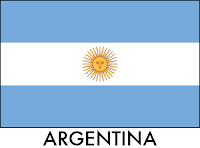
I've got a lineup of six bottles representing five countries and... two languages.
OK, maybe it's not quite as diverse as the 2012 Olympic Games (no Chinese table tennis win, no surprise
Canadian upset in the women's modern pentathlon), but it is a neat little tasting kit from the folks at
TastingRoom.com. The selection they sent me is called the
Wines of the World Super Flight.
I really enjoy these samplers, and each 50 mL sip is just enough to get a general idea about the particular wine (though they do now offer a Wines by the Glass option that involves 100 mL bottles). I've had several of these kits in the past, but one of my favorites was when it was used in an
online tasting with fellow winebloggers. But the real application for these is as gifts, and that's where the Super Flight option comes into play. More on that in a bit, so let's see our competitors for tonight's Lilliputian tasting:
 2011 Old Coach Road Sauvignon Blanc
2011 Old Coach Road Sauvignon BlancNelson, New Zealand
13.5% abv.
Lime peel and touch of grapefruit, crisp and just tart enough to be interesting. Long finish of grapefruit peel. Recommended with grilled scallops and an Asian slaw.
 2010 Spring Seed Wine Co. "Four O'Clock" Chardonnay
2010 Spring Seed Wine Co. "Four O'Clock" ChardonnayMcLaren Vale, Australia
$18, 13.0% abv.
Rich lemon meringue pie aroma and flavor, firm acidity and a bright, brassy mouthfeel. Citrus flavors with hints of overripe peach. I absolutely love the old seed catalog artwork on the label, which is another neat thing about these bottles--getting to see the full label in miniature form.
 2009 Stickybeak Pinot Noir
2009 Stickybeak Pinot NoirSonoma Coast, California
$15, 14.3% abv.
Ripe wild strawberry aromas and flavors, blending toward raspberry on the finish. Light and mild with a short finish. I think this would have been a really good pairing with my recent veal chops with muscadine grapes.
 2009 Il Cuore "The Heart" Zinfandel
2009 Il Cuore "The Heart" ZinfandelMendocino County, California
$16, 15.3% abv.
Black cherry and an earthy, woody nose. Spicy dark fruit flavors with surprisingly mild tannins, a bold fruit profile, and a mild finish. Great California Zinfandel that would be good at the Thanksgiving table, and certainly one that would be pleasant to sip on a cold winter afternoon.
 2008 La Montesa Rioja Red Blend
2008 La Montesa Rioja Red BlendRioja, Spain
$18, 14% abv.
Red cherry and bacon fat with a touch of ash. Medium tannins and a tart, ripe cherry flavor with a long finish. Slightly nutty aftertaste. I'm a big fan of Rioja, and this doesn't disappoint. When this flavor profile comes around, I think lamb is the only real option.
 2008 Urraca Malbec
2008 Urraca MalbecMendoza, Argentina
$20, 14.8% abv.
Plum and white pepper with a hint of tobacco. Rich dark plum flavors with an earthy undertone and a long finish. I'm thinking slow braised oxtails with caramelized onions and steamed broccolini. I have future plans for this wine, but how can I do that with just a drop left in the 50 mL bottle?
This tasting kit came with the "Super Flight" option, which includes a gift card with a code that lets you pick your two favorites from the flight so that you can receive full size bottles. I went with the Chardonnay and Malbec, which should arrive in a few days. These are
pretty good deals for gifts, though at first I thought it meant that I just got two extra tiny bottles. And when you buy this category, you'll need to kick in an extra $13 for shipping, but the end total is still pretty reasonable. Check out the website for an ever-growing list of flights and themes.
Note: These wines were received as samples.
 After recently getting back into hard cider, I found myself wanting to try more. I know that I'll exhaust the locally available options pretty quickly, but while driving home one night I was thinking about the subject and wondered, "If the wine shops carry big beer, do they carry big cider?"
After recently getting back into hard cider, I found myself wanting to try more. I know that I'll exhaust the locally available options pretty quickly, but while driving home one night I was thinking about the subject and wondered, "If the wine shops carry big beer, do they carry big cider?" Woodchuck Private Reserve Ginger
Woodchuck Private Reserve Ginger

























